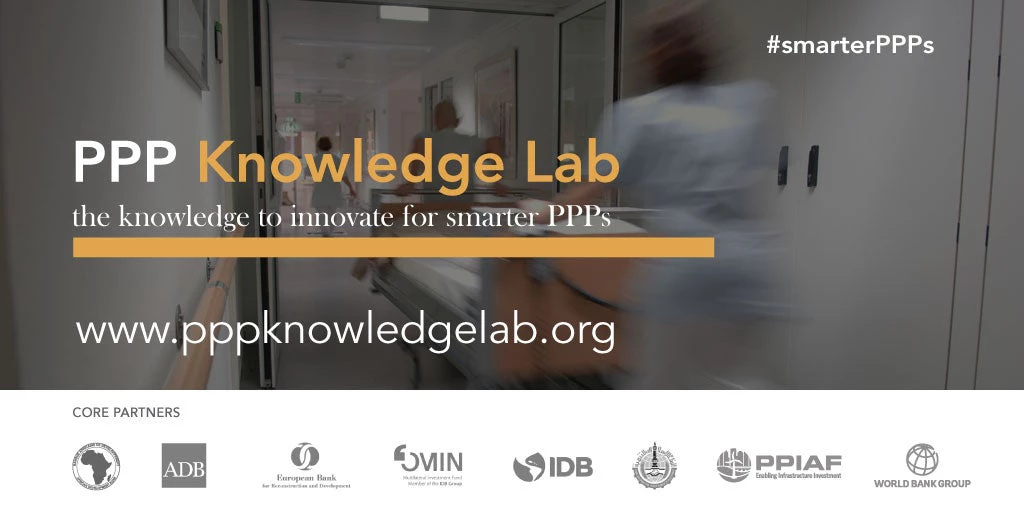In
my last post, I mentioned that battle-hardened
cognoscenti of the PPP industry never imagined, before the launch of the
PPP Knowledge Lab, that they would be able to access all of the PPP-related resources they need on one single platform. But there’s something else that these players could not have visualized just a decade ago: the scope of the collaborations that are taking place across the entire PPP marketplace.
While by no means a definitive list, the breadth and scope of this new multilateral development bank (MDB)-led joint agenda on PPPs is impressive: Of course, these collaborations are in addition to the coordinated effort that produced the
PPP Knowledge Lab
, the subject of my last post. To add to these efforts, the
G20-sponsored Global Infrastructure Hub (GIH)[1] has now added even greater political backing to the global infrastructure agenda.
Of course, these collaborations are in addition to the coordinated effort that produced the
PPP Knowledge Lab
, the subject of my last post. To add to these efforts, the
G20-sponsored Global Infrastructure Hub (GIH)[1] has now added even greater political backing to the global infrastructure agenda.
Why this level of collaboration among MDBs is happening now is an important question -- one that I have some thoughts on. But I’m more interested in your ideas for other areas of coordination and joint work that MDBs involved in PPPs can turn their focus to. Please add your input in the comments below so that these collaborative efforts on PPPs can achieve the only goal that’s important – improving the quality and quantity of infrastructure wherever it’s needed and, in so doing, raising standards of living for all.
While by no means a definitive list, the breadth and scope of this new multilateral development bank (MDB)-led joint agenda on PPPs is impressive:
- Many new project preparation facilities (PPFs) have been created, including the Global Infrastructure Facility (GIF) at the World Bank Group, the Asia Pacific Project Preparation Facility (AP3F) at the Asian Development Bank, Infrafund at the Inter-American Development Bank, the Programme for Infrastructure Development in Africa (PIDA) at the African Development Bank Group, and the Infrastructure Project Preparation Facility (IPPF) at the European Bank for Reconstruction and Development. All are designed to support emerging market public sector client created pipelines of PPPs with investment potential.
- The PPP Certification Program by APMG, funded by PPIAF with support from a number of MDBs, is due to launch in 2016. It has been designed to build deeper and unified capacity among public sector officials globally so that they can plan, prepare, procure, and deliver PPPs.
- An expanded Infrascope under the EIU, now expanded to Africa, reaches beyond the previous comparative analysis of PPP readiness done for Latin America, the CIS region and Asia.
- The International Infrastructure Support System, or IISS, a template-based PPP project preparation dissemination tool from the Sustainable Infrastructure Foundation (SIF) that connects investors with well-prepared projects, is set to officially launch in late January, 2016, with backing from a host of MDBs, the private sector, and donor governments.
- PPP Standardized Clauses under PPPIRC that improve the replicability of PPP procurement and thus lower the transaction costs.
 Of course, these collaborations are in addition to the coordinated effort that produced the
PPP Knowledge Lab
, the subject of my last post. To add to these efforts, the
G20-sponsored Global Infrastructure Hub (GIH)[1] has now added even greater political backing to the global infrastructure agenda.
Of course, these collaborations are in addition to the coordinated effort that produced the
PPP Knowledge Lab
, the subject of my last post. To add to these efforts, the
G20-sponsored Global Infrastructure Hub (GIH)[1] has now added even greater political backing to the global infrastructure agenda.
Why this level of collaboration among MDBs is happening now is an important question -- one that I have some thoughts on. But I’m more interested in your ideas for other areas of coordination and joint work that MDBs involved in PPPs can turn their focus to. Please add your input in the comments below so that these collaborative efforts on PPPs can achieve the only goal that’s important – improving the quality and quantity of infrastructure wherever it’s needed and, in so doing, raising standards of living for all.
[1] GIH was created under the 2014 Australian Presidency, launched in the middle of 2015 at PPP Days in June in London under the Turkish G20 Presidency in 2015, and furthermore backed strongly by the new Chinese G20 Presidency into 2016.


Join the Conversation